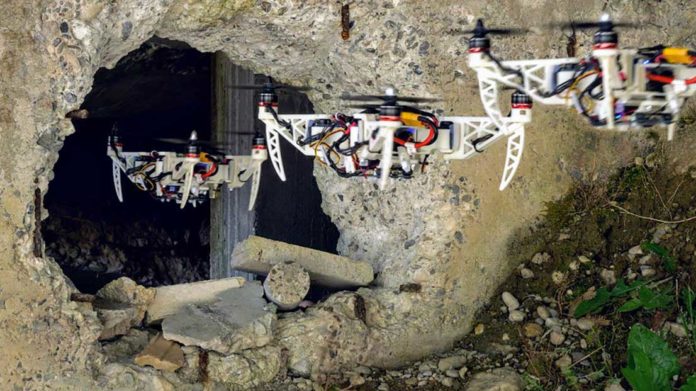Post-earthquake or post-fire inspection of the building is exactly the most dangerous kind of jobs. Despite ongoing technological advances and widespread awareness of best safety practices, a lot of people still die or get injured as a result of their work.
In such cases, human rescuers would like drones to do for them. The advantage of using drones that it could look for people trapped inside and guide the rescue team towards them. For this, drone needs to pass through the crack of the wall, a partially open window, or through bars – something the typical size of a drone does not allow.
Considering the issue, scientists at the EPFL have developed a new flexible drone.
Scientists took inspiration from birds that fold their wings in mid-air to cross narrow passages and developed this foldable drone that can squeeze itself to pass through gaps and then go back to its previous shape, all the while continuing to fly.
Davide Falanga, a researcher at the University of Zurich said, “Our solution is quite simple from a mechanical point of view, but it is very versatile and very autonomous, with onboard perception and control systems.”
“In comparison to other drones, this morphing drone can maneuver in tight spaces and guarantee a stable flight at all times.”
Scientists designed this quadrotor with four propellers that rotate independently, mounted on mobile arms that can fold around the mainframe thanks to servo-motors. The ace in the hole is a control system that adapts in real time to any new position of the arms, adjusting the thrust of the propellers as the center of gravity shifts.
Stefano Mintchev, co-author and researcher at the EPFL School of Engineering said, “The morphing drone can adopt different configurations according to what is needed in the field. The standard configuration is X-shaped, with the four arms stretched out and the propellers at the widest possible distance from each other.”
“When faced with a narrow passage, the drone can switch to an “H” shape, with all arms lined up along one axis or to an “O” shape, with all arms folded as close as possible to the body. A “T” shape can be used to bring the onboard camera mounted on the central frame as close as possible to objects that the drone needs to inspect.”
Scientists are further planning to improve the drone structure so that it can fold in all three dimensions. Most importantly, they want to develop algorithms that will make the drone truly autonomous, allowing it to look for passages in a real disaster scenario and automatically choose the best way to pass through them.
Scientists have presented their paper in IEEE Robotics and Automation Letter.
